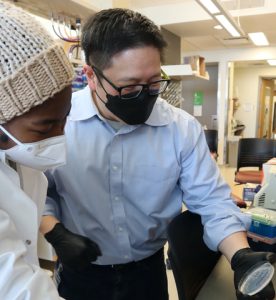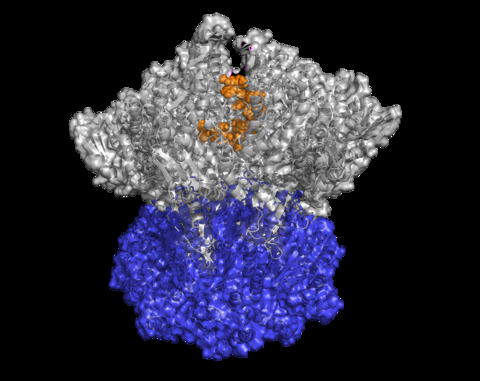Researchers from the University of Massachusetts, Amherst, say they have made an important discovery on how cells handle stress. Using bacterial cells, the team found that a damage-repairing enzyme, called ClpX, can not only mutate to fix multiple cellular issues but can respond to changing levels of cellular energy to help keep a cell healthy. The scientists’ study (“ATP hydrolysis tunes specificity of a AAA+ protease”) was published in Cell Reports.
“What we’re really interested in,” noted Peter Chien, PhD, professor of biochemistry and molecular biology and the paper’s senior author, “is how cells respond to stress. We study a class of enzymes, called proteases, which target and destroy harmful proteins within a cell. These proteases can selectively recognize specific, individual proteins singular proteins. But how do they do this? How can they choose?”
Chien and his co-authors focused on two specific proteases—Lon and ClpX—each of which is tuned to recognize a different harmful protein. It had long been thought that Lon and ClpX functioned like keys: each could open only a specific lock and no other, and if a cell lacked either, then serious side effects would occur.
“In bacteria, AAA+ proteases such as Lon and ClpXP degrade substrates with exquisite specificity. These machines capture the energy of ATP hydrolysis to power unfolding and degradation of target substrates. Here, we show that a mutation in the ATP binding site of ClpX shifts protease specificity to promote degradation of normally Lon-restricted substrates,” wrote the investigators.

“We consider various models for this effect based on emerging structures of AAA+ machines showing conformationally distinct states.”
“If you’ve ever had an extremely messy college roommate,” said Chien, “you know how important it is to empty the trash regularly. Missing the Lon protease is like having a roommate who never washes, changes, or cleans.”
But, after a series of experiments that involved deleting Lon from colonies of bacterial cells, Chien’s team started noticing something odd: some of the colonies were surviving.
This observation led to their first discovery: ClpX can mutate to perform a Lon-like function, though it loses some of its ClpX abilities. It’s as if, in order to keep your dorm-room clean, you started washing your roommate’s socks, but had to sacrifice some of your own clean laundry in order to do so.
In tracing out exactly how the ClpX mutation allowed the protease to expand its function, the team made its second discovery: wild, non-mutant ClpX can also perform some of Lon’s duties, under the right conditions.
It turns out that ClpX is sensitive to ATP, an organic compound that is the energy source for all living cells. At normal levels of ATP, ClpX focuses on its own duties, but at a specific, lower threshold it suddenly starts cleaning up after Lon.
“This is a real breakthrough in the basic understanding of how cells work,” said Chien. “It changes the rules: not only does cellular energy control how fast a cell works, but how it works, as well.”



